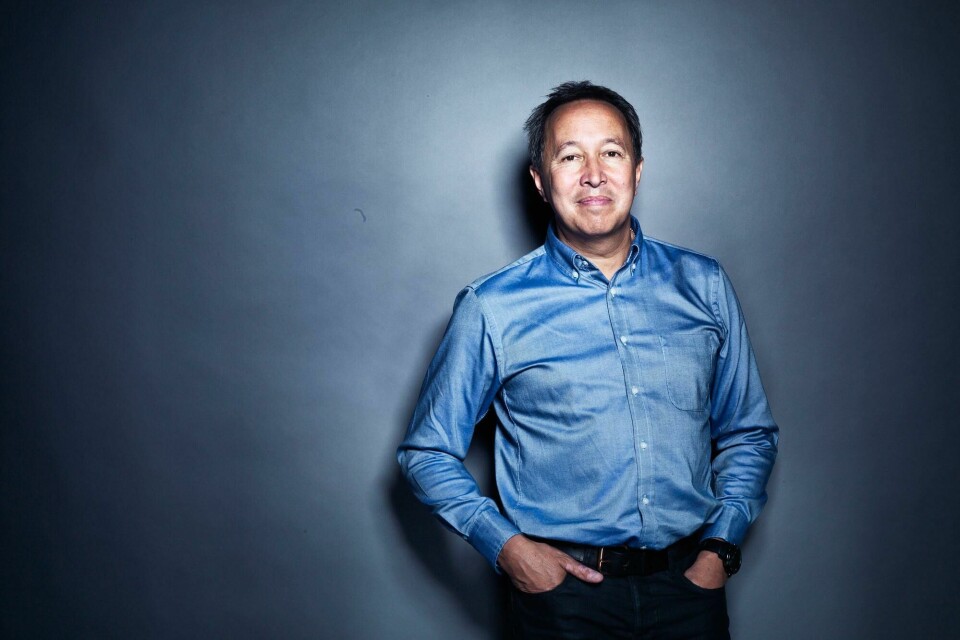
Designer Interview: Julian Thomson and his ‘Super Elise’
Jaguar designer Julian Thomson talks us through his plans for a reimagined Series 1 Elise
Last summer, Ian Callum revealed the fruits of an out-of-hours restomod project in the form of the ‘Mark 2 by Callum’ – the Jaguar director of design’s reworking of his marque’s 1960s stalwart saloon. This one-off special was Callum’s own weekend plaything, and offered an intriguing insight into the particular tastes of a high-profile design director.

Julian Thomson, advanced design director at Jaguar
A year on, Callum’s colleague and long-time friend Julian Thomson – director of advanced design at Jaguar and alumnus of Ford, Lotus, VW Group and Land Rover – is working on a reinterpretation project of his own. Thomson’s design is even more personal in that he’s chosen to rework the Series 1 Lotus Elise – a car he designed during his tenure at Hethel. He has produced a rough sketch and two renderings of what he calls the ‘Super Elise’ – a wider, lower, more powerful and even more stripped-out take on the flyweight, composite-bodied roadster he created in 1996.

Julian Thomson’s sketch of his Super Elise
Here, Thomson discusses why he chose to rework one of his own cars, how he reinstated some features lost to production, and how he has focussed and modernised the Elise’s design while remaining true to its inspirations:

Series 2 post-facelift Elise
“I thought if I was ever going to do something like Ian’s Mark 2 Jaguar, that I’d like to do it on one of my own cars. I was disappointed by how quickly Lotus facelifted the Elise in 2000 – it was done very well, but I just wish the original had lasted a bit longer.
“I bought the final right-hand-drive Series 1, and whenever I washed it I was reminded of things that didn’t turn out quite as I’d have liked, and always wanted to put them right. My new design might seem relatively modest, but that’s because I actually plan to build this car for myself one day – a carbonfibre-bodied one-off Series 1. The original has some very pure forms; I’d just like to clean it up, make it neater and improve the quality and confidence of the design.
“I’ve lowered it by about 30mm, widened by 75-100mm and added bigger wheels so it looks more purposeful and solid. The original was less powerful than it looked, with bulging arches and the like, but I’d like to deliver on the performance it promised by installing something like a Honda VTEC engine and maybe a sequential gearbox.

Singer ‘San Diego’ 911
“I really like what Singer does – modernising Porsche 911s in a classic way – and I’ve tried to respectfully modernise the Elise. The S1 was strongly influenced by 1960s and 1970s cars, and I still want it to look of that ilk. I’d like to respectfully modernise it in a period fashion.
“In terms of surfacing, I didn’t want lots of big, angular, scoopy vents on the lower half, which many people are doing. Instead it references racing Porsches and Ferraris of the 1970s, such as the Ferrari 512 S, with their experimental stick-on wings and flaps that weren’t intrinsic to the main form. I wanted a very clean, pure form, with some carbonfibre technical bits stuck on to add to the aero – a bit like some modern DTM cars. For example, the Elise had little aero corners moulded into the front bumper – I’ve used carbonfibre add-ons instead.

Ferrari 512 provided inspiration
“Like those 1970s cars, the nose is very pure and simple – it’s a nice, soft form with holes cut into it – rather than having snorkelly vents and the tree frog-style wide mouths you see on lots of modern sports cars. It lets the pure form of the car really show – like in an old Lotus or Jaguar, it is just lovely sculpture, with the holes cut into that sculpture, rather than the holes dictating the design. It’s quite an old way of doing things – I’m trying to modify the car in a modern way but making sure that it still looks appropriate.
“There’s a big venturi element at the back. We’d originally planned something like that, but it didn’t fit the budget. We know much more about those kinds of devices now. In fact, the back end of the car owes a lot to modern Ferraris. We’d also planned an exposed chrome roll bar without a rear window, but it let engine fumes into the cabin. I’ve reinstated the simplicity of that arrangement and applied a removable hard-top.

Sketch of Thomson’s Elise
“Lotus has made all of its products easier to live with, but I’d want it much more in the character of the original. We made so many references to motorcycles, lightness and stripping-out with the Elise – that was the heart of the car. I’d like it even more stripped-out. It’s a bit of a pipe dream, but I’d love to make it happen at some point.”
While Callum’s Jaguar project is tied inexorably to his day job, we’re more taken by Thomson’s approach. In revisiting a previous creation of his own, refining it further with the benefit of experience and improved technology, plus embracing the benefit of creating a one-off where rules and regulations are less stringent, his project promises to deliver the Elise as he truly intended. The timely nature of its arrival, as Lotus moves away from its established values into uncertain territory, only adds to the intrigue.



